What is Safer Internet Day?
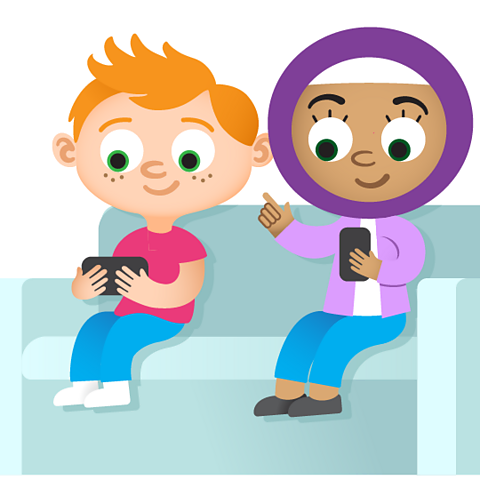
Safer Internet Day happens every year. It is a day where people take the opportunity to think about how to be safer and more responsible when they use the internet on their devices.
In 2025, Safer Internet Day is on the 11th February.
In this article, you will learn about:
- How to stay safe while using the internet
- The benefits of the internet
- How the internet is used in different ways.

How is the internet useful?
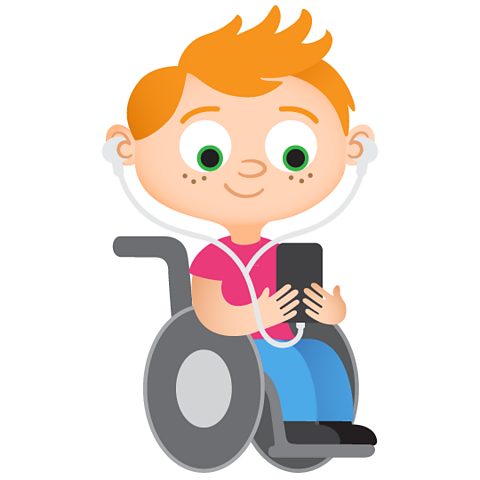
Many of the games we play, communication that we do with others, videos we watch and the research we do, uses the internet.
It’s a good idea to limit how much internet is used in order to protect your wellbeing.
Spend some time in a community, such as a sports club, an after school club or with friends and family.

What is a community?
KS1: Citizenship
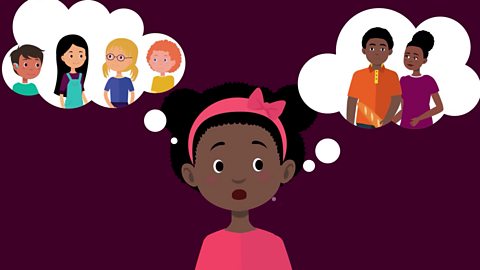
Super Mood Movers - Fit and well
BBC Teach: Supermovers
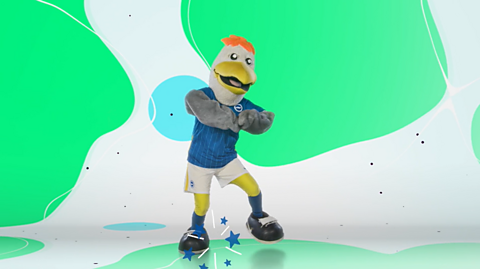
Computing
There are lots of devices that use the internet. How many can you think of?
Click the button to reveal some examples.
Examples of devices could be:
- Computers or laptops
- Mobile phones
- Tablets
- Speakers
- Smart Watches
- Cars
- Home appliances
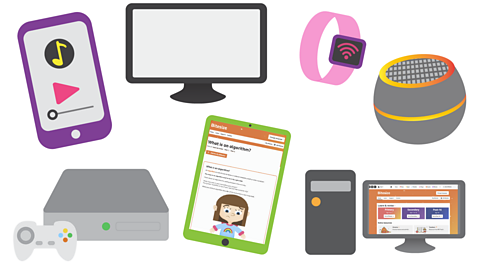
SMART Safety Rules
In order to be as safe as possible when using devices connected to the internet, it’s important to make sure to follow some SMART rules.
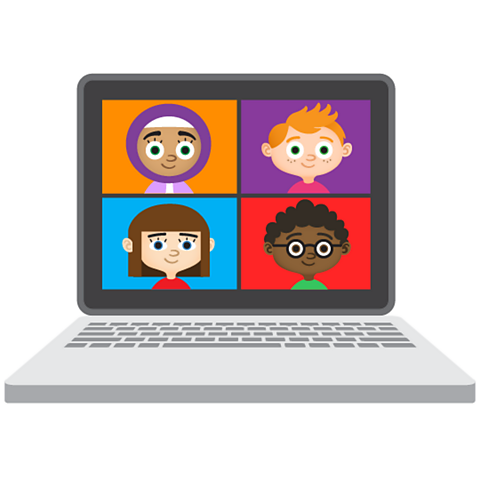
S is for Safe.
Keep your own and other people’s information safe. Don’t share information such as your name, age, where you live or where you go to school. Only your safe adults should know your passwords.
Look out for information that might be given away in photos too.


M is for Meet.
Be careful of people you talk to or meet online, even if they say they’re also a child. If they ask to meet you online or in person, or ask for photos, you should tell a trusted adult straight away.

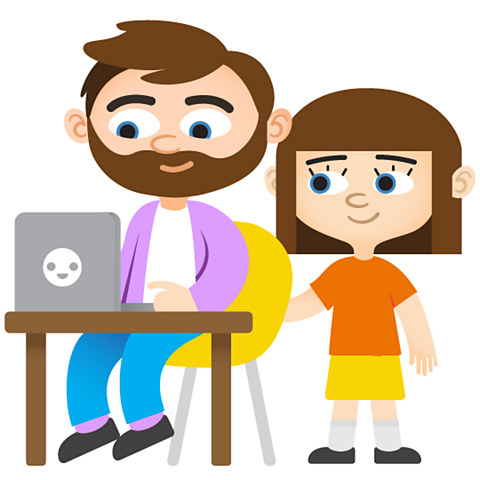
A is for Accepting.
Before accepting friend requests, advert or link pop ups, ask a trusted adult first. It’s safer to not accept requests from people that you do not know.

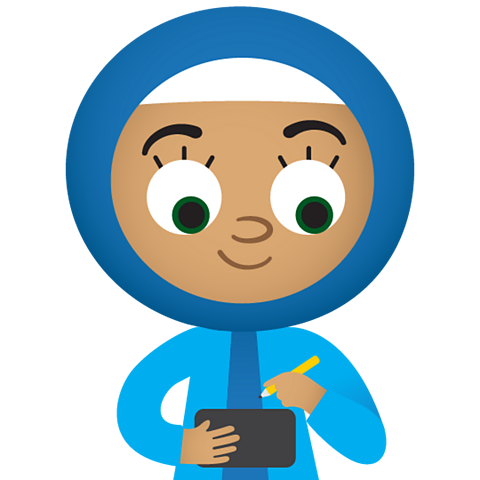
R is for Reliable.
Unfortunately, not everything you see or read online is reliable. Some things are untrue or fake. When looking for information, it’s best to check this in a few places first to see if it is true. You can ask an adult for help too.

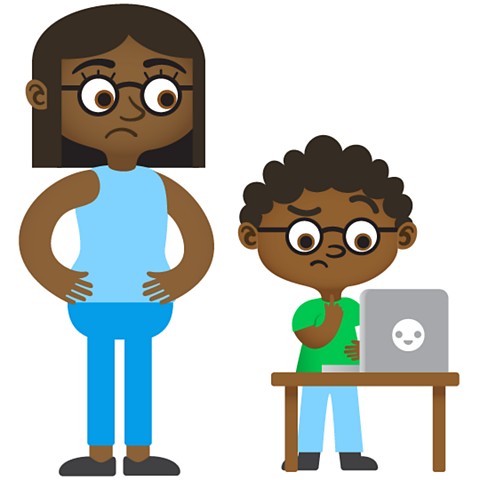
T is for Tell.
If something online, on a computer, a game, or video makes you feel scared, sad , unsure or worried, you should tell a trusted adult, straight away. You can also press the ‘Report’ button if there is one.

Activity: Thinking points

Think about the questions below. You can also talk about them with an adult.
- What can you do if you read something that is not true online?
- What should you do if somebody says something that is unkind online?
- Who are your trusted adults that can help you if there is a problem?

Watch: Keeping safe online
Using computers and being online can be great fun and really helpful.
But there is lots you need to be careful with and things you shouldn’t click on.
Watch the video as Pip and Declan learn how to stay safe online and who to talk to if they're not sure about something.
MUSIC
Declan is swiping on a tablet.
PIP: What you up to Declan?
DECLAN: Hi Pip!
PIP: Hi!
DECLAN: I'm just looking on the internet for help with my homework.
PIP: Ooh. (GASPS) What's that flashing button?
DECLAN: Don't touch that!
Pip touches the screen.
ERROR SOUNDS
DECLAN: No!
PIP: Oh! Too late! Haha!
Declan gasps. Suddenly they are in two different windows on our screen.
They talk over each other in a panic. Lots of other windows and error messages pop up.
PIP: I can't see you Declan!
DECLAN: Pip? This is… I don't think I like this. It's a wee bit crazy!
DING
The narrator talks about online safety while we see an animation of someone getting an adult to help with their tablet.
NARRATOR: Declan is right, you shouldn't touch or click something on a computer that you are not familiar with. There are lot of things you need to be careful with when you're online. Adverts are one of them.
NARRATOR: If you don't recognise what you see, you should tell an adult you trust. Now, let me help you guys out.
The windows and error messages are closed down, and Pip and Declan are back in one window as normal.
PIP: Phew! That was a bit weird! I think it's safer if we play outside.
DECLAN: Yeah, me too!
MUSIC
Quiz
Being safe on the internet

Image caption, Gaming
To stay safe when gaming, don’t talk to or add anyone that you don’t know even if they say they’re a child too. Make usernames different to your real name, so that you can’t be identified. Don’t include information about your home, family or school. Play games that are age appropriate.
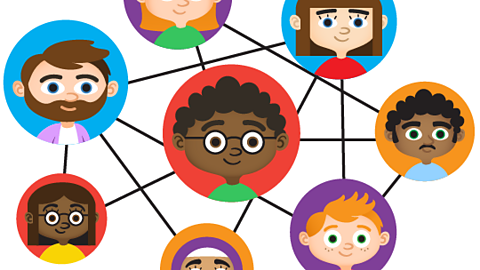
Image caption, Communicating
The internet can be used to communicate with others. Your trusted adult should know when and who you are talking to. It is not safe to communicate with someone that you don’t know, even if they say they’re a child. Keep photos, videos and other personal information safe.

Image caption, Researching
The internet is full of information. Unfortunately, not all of it is truthful. Check information from a few different safe sites to make sure it is accurate. BBC Bitesize is a safe site. If you find anything worrying, tell a trusted adult. Your teacher can help you to find websites to help with your learning.
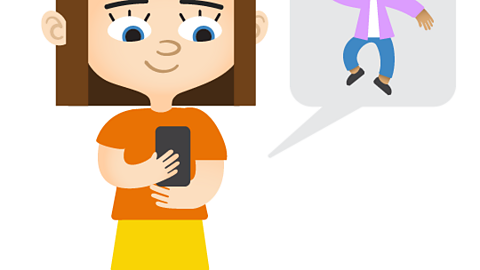
Image caption, Viewing photos and videos
Photos and videos online can be a source of entertainment and a way to keep in touch with friends and family. But some photos and videos are not safe to view. A trusted adult can help to set filters so you see mostly safe content. Remember to be kind with comments. If there is something that worries you, tell your trusted adult and press the ‘report’ button.
1 of 4
How to keep our personal information private
KS1: Computing
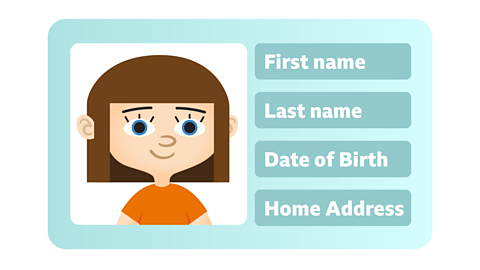
How to be kind online
KS1: Computing
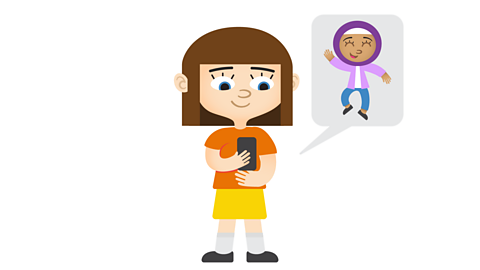
How can we trust a website?
KS1: Computing
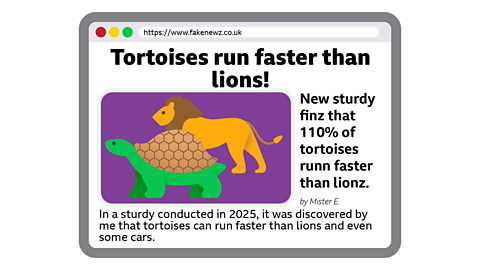
Quiz: Help Sid!
Help Sid in this quiz as he uses the internet safely.
Have fun with computers!
What is drawing?
KS1: Art and Design
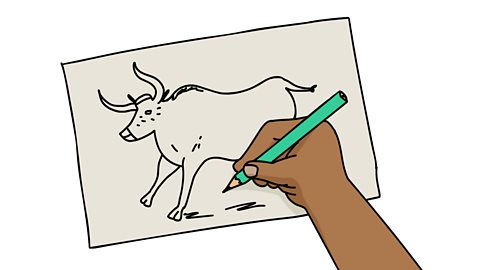
How can you make digital art?
KS1: Computing
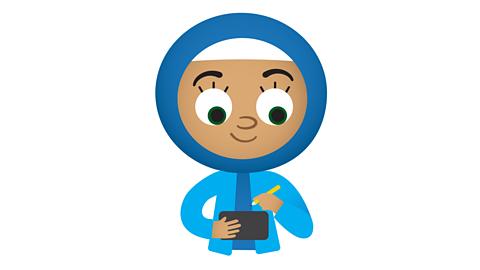
What are digital photos and videos?
KS1: Computing
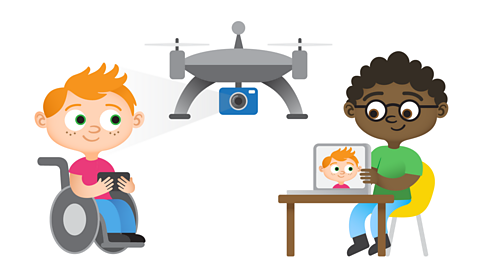
Where next?
Primary Topic Packs
Discover topics, events and project packs for children in KS1 and KS2.

